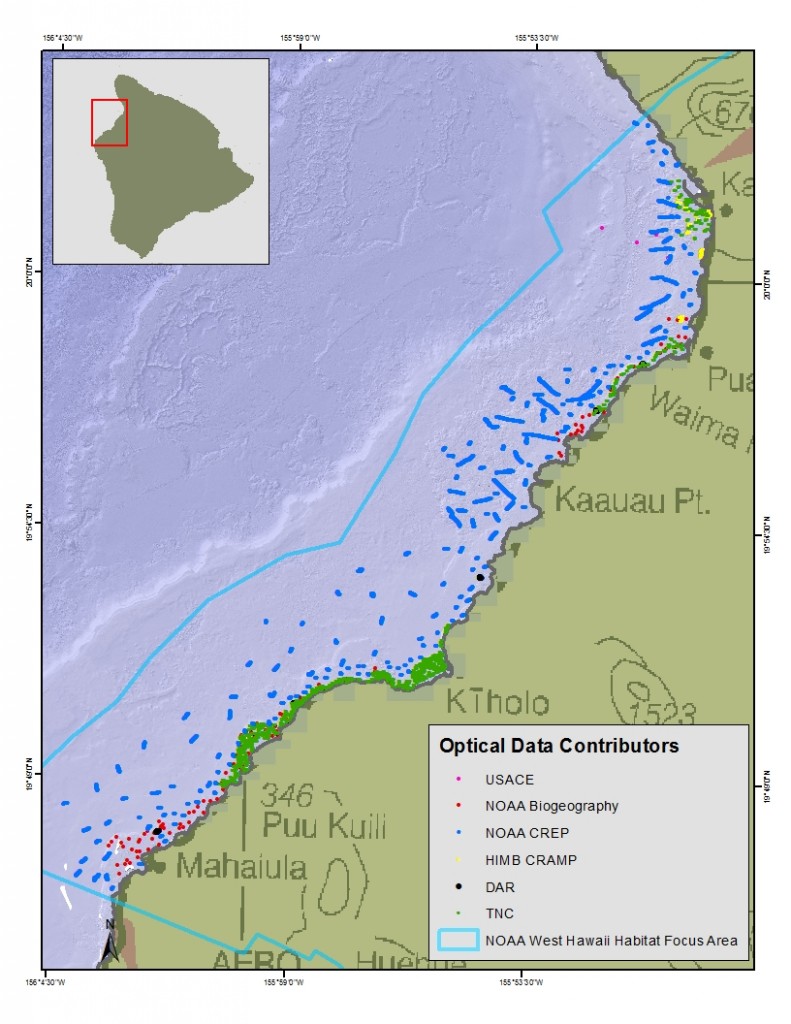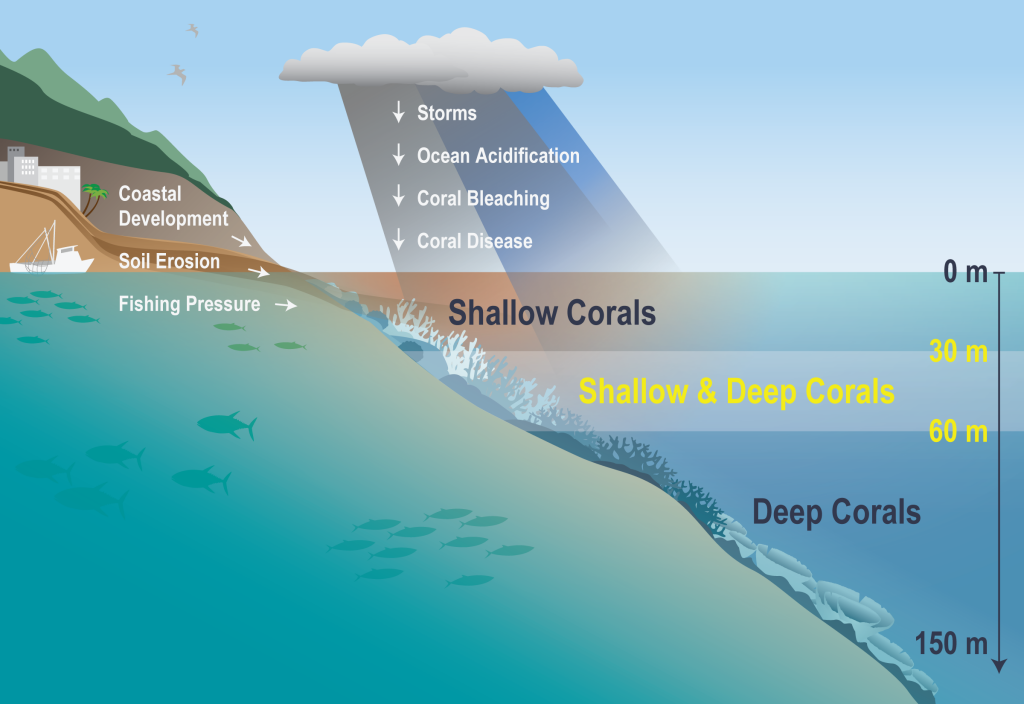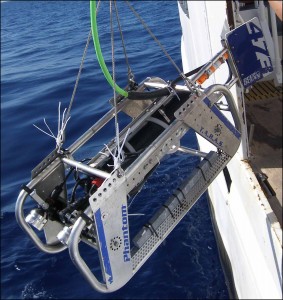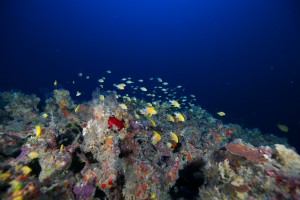
Deeper Views of Reefs in West Hawaiʻi
Managers of Hawaiʻi’s coral reefs are “seeing” some reefs for the first time, thanks to new maps that reveal places difficult for divers to visit. This fundamental information is important, because the health and abundance of valuable fishes and corals depend on their habitats. Results are showing that deeper reefs may provide a sanctuary for shallow corals in trouble.

To get a fuller picture of life underwater, a team of scientists from NOAA coordinated many experts to create the maps of shallow and deep reefs near the Big Island’s shoreline. The maps are free and available to the public (click here for maps hosted by UH Mānoa Pacific Islands Benthic Habitat Mapping Center).
The Hawaiʻi Department of Aquatic Resources is using the maps to initiate and inform discussions about how to improve management of these highly valuable ecosystems. The maps represent the seafloor, from zero to 492-feet in depth, within the boundary NOAA’s West Hawaiʻi Habitat Focus Area (see map).
Seeing the Stress
In this area in recent years, divers have conducted in-person coral reef surveys in accessible depths of less than 90 feet. These surveys have provided evidence that shallow water habitats are increasingly stressed by numerous threats, including:
- rising temperatures
- stronger storms
- ocean acidification
- coral bleaching
- sedimentation and nutrient pollution from septic systems and fertilizers, and
- fishing pressure.
But what’s happening in the coral reefs deeper than 90 feet? Although they are connected to the shallower reefs and face the same threats (see figure), they may provide a healthier refuge for fish and other reef inhabitants.

Diving Deeper with TOAD
To map the deeper coral reef habitats, which can be more dangerous to survey, Coral Reef Ecosystem Program (CREP) of NOAA’s Pacific Islands Fisheries Science Center found a safe solution. They used a Towed Optical Assessment Device (TOAD) — a camera sled pulled from a small research vessel. This TOAD video, taken at approximately 30-meters depth, is a great example of how shallow water habitats and species often overlap with deeper water habitat. An example of a deep water (100-meters depth) coral habitat is also shown in the video.

The overlap between shallow and deep habitats highlights the potential for deeper coral reefs to serve as refuge areas for fish and other species as they lose habitat in shallower reefs.
Limits of Coral Habitat
The CREP team surveys in this Habitat Focus Area reveal that corals are a limited resource. Most of the coral (94%) lives in shallow water (less than 90 feet), where impacts from a changing marine environment and human activities are intense. In deeper waters, impacts may be less intense.

The good news is that when coral in shallow waters can no longer tolerate conditions, they may find refuge in deeper water. The bad news is that the benefits of shallow water coral reef ecosystems may become more difficult to access, and species diversity and abundance will likely decline.
This cumulative work and effort would not have been made possible without significant contributions from NOAA and various partners, including The Nature Conservancy, the State of Hawaiʻi Division of Aquatic Resources, the Hawaiʻi Institute of Marine Biology, US Army Corps of Engineers, and the Biogeography Branch of the NOAA National Centers for Coastal Ocean Science.
